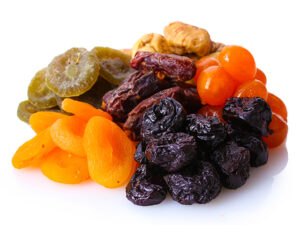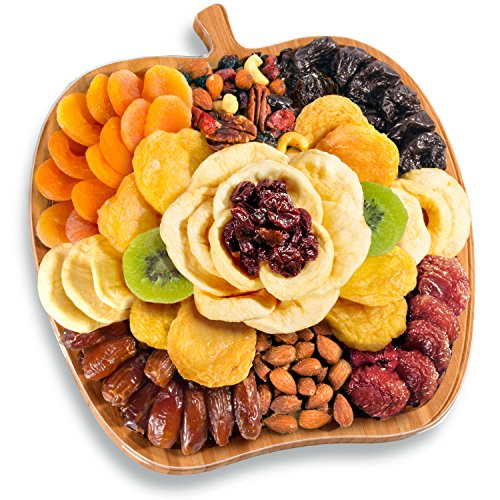Dried fruit is fruit from which the majority of the original water content has been removed either naturally, through sun drying, or through the use of specialized dryers or dehydrators. Dried fruit has a long tradition of use dating back to the fourth millennium BC in Mesopotamia, and is prized because of its sweet taste, nutritive value, and long shelf life.

Consumption of dried fruit
Today, dried fruit consumption is widespread. Nearly half of the dried fruits sold are raisins, followed by dates, prunes, figs, apricots, peaches, apples ,… These are referred to as “conventional” or “traditional” dried fruits: fruits that have been dried in the sun or in heated wind tunnel dryers. Many fruits such as cranberries, blueberries, cherries, strawberries and mango are infused with a sweetener (e.g. sucrose syrup) prior to drying. Some products sold as dried fruit, like papaya, kiwi fruit and pineapple are most often candied fruit.
Is Dried Fruit Healthy as Fresh Fruit?
Both fresh and dried fruit can be worked into a healthy eating plan.With fresh fruits, you get more vitamin C and some of the B vitamins like thiamin, versus dried fruits. Another bonus: fresh fruit contains water, making it more hydrating and filling than dried varieties.

When is The Best Time to Eat Dried Fruit?
Have you ever wondered, “is dried fruit healthy to eat during the summer?” It is, but consuming dried fruits during the cold winter months may be more practical. Fresh fruit is less available during this time, making dried fruit a healthy alternative. Most dried fruit has comparable nutrients to fresh fruit (except it’s lower in vitamins C and some of the Bs.)
Is Dried Fruit Healthy for Diabetics?
While diabetics can eat dried fruit, they should avoid those made with added sugar. Practicing portion control is also a must to help maintain healthy blood sugar levels. Consuming two to three tablespoon servings and says it’s helpful to combine them with a source of protein such as nuts to help control blood sugar levels.



